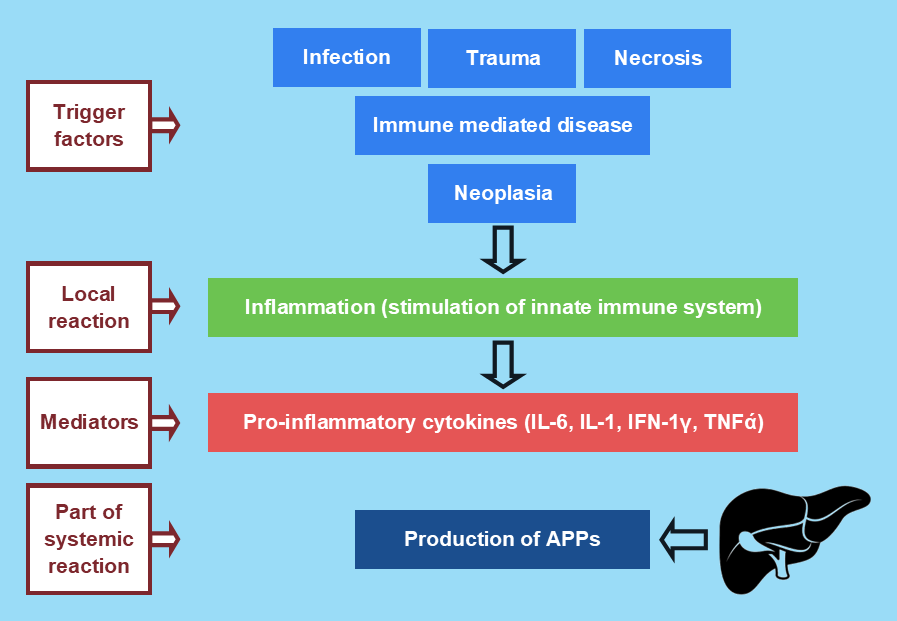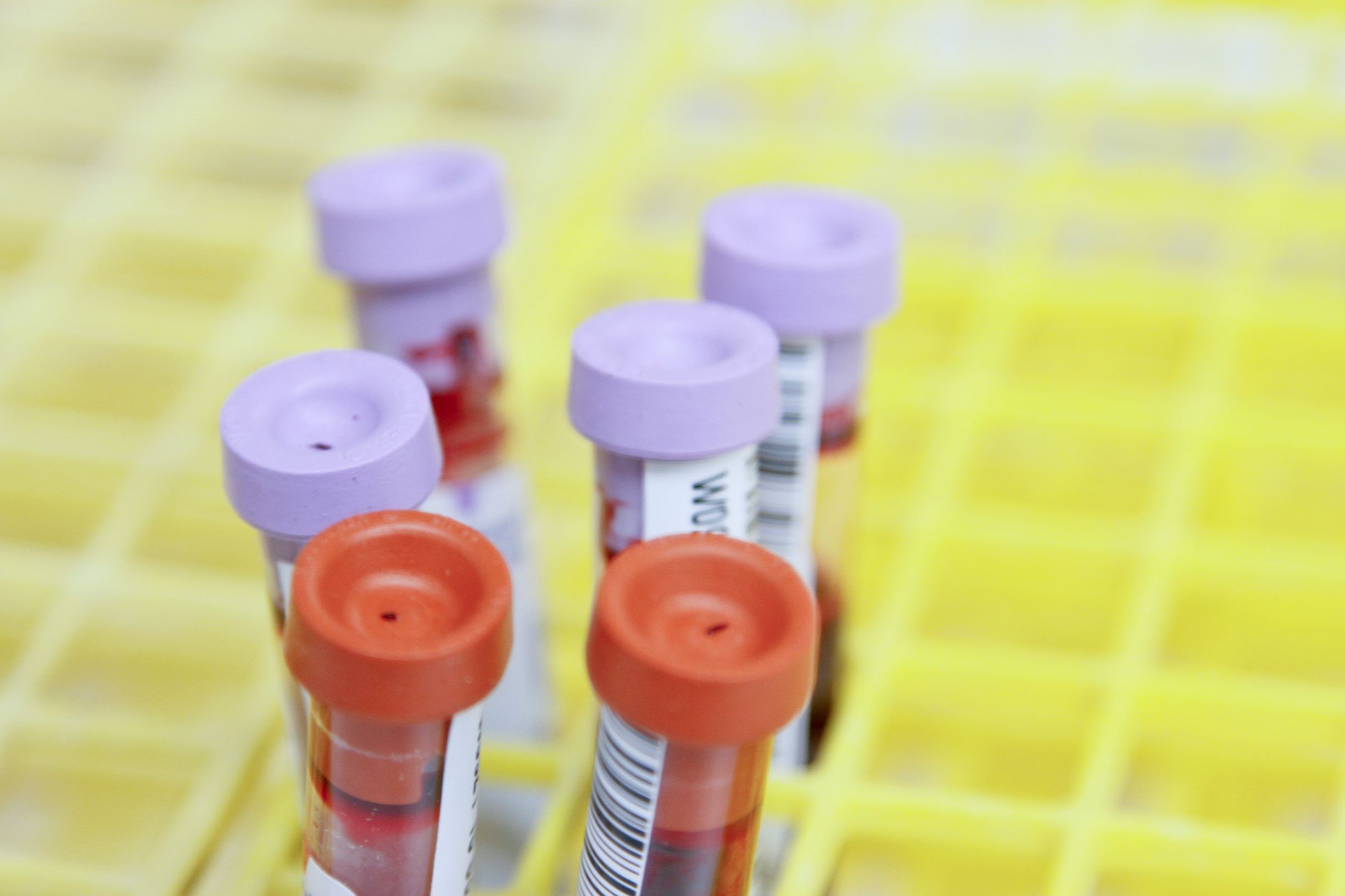Sandy Weltan
An acute phase protein response is part of the innate host defence system and is a non-specific response to tissue injury.

Acute-phase proteins (APP) are glycoproteins which are mostly produced in the liver. C-reactive protein (CRP) is a major APP in dogs, meaning that it is present in low concentrations, increases 100 to 1000 fold with inflammation, peaks in 24-48 hours and decreases rapidly. CRP is a sensitive but non-specific marker of inflammation. Serum amyloid A (SAA) is the major APP in cats.
There was a large amount of interest in CRP in the early and mid-2000s when a commercial kit for measuring canine CRP became available, with investigators measuring CRP concentrations in a number of different disease conditions. Diseases in which marked increases in CRP do occur are:
· Infections (viral, bacterial, rickettsial, protozoal)
· Endotoxaemia
· Neoplasia associated with necrosis
· Acute pancreatitis
· Immune mediated haemolytic anaemia
· Immune mediated thrombocytopaenia
· Immune mediated polyarthritis
· Steroid responsive meningitis-arteritis.
Because minor increases occur in numerous disease conditions and there is overlap between normal concentrations and those in disease, a suggested clinical decision limit is 20 mg/L (within the reference interval we use) and a pathological decision limit of 65 mg/L.
The greatest use of CRP is in detecting inflammation when the white cell count (WCC) is not elevated and in monitoring response to treatment.
It is a useful and non-invasive method for distinguishing steroid responsive meningitis arteritis from other CNS diseases. The only other neurological condition in which CRP is increased is in septic meningitis which is extremely uncommon in dogs.
It is very useful in monitoring response to treatment in:
> Parvoviral infection
> Sepsis
> Immune mediated haemolytic anaemia
> Immune mediated polyarthritis
> Steroid responsive meningitis-arteritis.
If CRP levels are measured at the time of diagnosis, a steady decline in concentration indicates a response to treatment and a good prognosis. If levels fail to decrease or start to increase again, that indicates a lack of response to treatment and a guarded outcome. In immune mediated conditions that are treated with corticosteroids, the WCC may not decline because of the stress leukogram associated with the corticosteroids.

